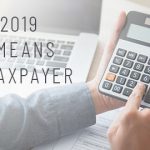New Tax Year 06/04/19
What does the new 2019 tax year mean for the taxpayer?
Well as always, time continues to progress and we once again saw the 6th April roll around again which signifies the start of a new financial tax year. This of course brings into effect new changes to income tax allowances and bands which are always burning questions we get asked by our customers so we thought we’d just write a round-up of all the big changes to the new financial tax year.
Personal Allowance
This year we have seen the personal allowance increase from £11,850 to a new more rounded figure of £12,500. However, there remains to be a reduction in the personal allowance of those with an adjusted net income of over £100,000. For 2019/20 this means that there is no personal allowance available when an individual’s adjusted income exceeds £125,000.
Tax Bands
Taxpayers elsewhere in the UK, the basic rate of 20% tax (7.5% for dividends) still applies. For 2019/20 the basic rate band increased to £37,500 so that the threshold at which the 40% higher tax rate band applies is £50,000 for those who are entitled to the full personal allowance. For incomes over £150,000 individuals will pay tax at 45%.
Scottish Residents
For Scottish residents, the tax on income compared to taxpayers resident elsewhere in the UK is different. The Scottish income tax rate bands apply to income such as self employed trade profits, employment income and property income. They will be de divided into a 5 band category which breaks down as follows:
| Taxable income | Band | Tax rate | |||
|---|---|---|---|---|---|
| Over £12,500 to £14,549 | Starter rate | 19% | |||
| Over £14,549 to £24,944 | Basic rate | 20% | |||
| Over £24,944 to £43,430 | Intermediate rate | 21% | |||
| Over £43,430 to £150,000 | Higher rate | 41% | |||
| Above £150,000 | Top rate | 46% |
There are of course many other alterations to finances in the UK for the new year but these are the main aspects we consider of importance. For a full breakdown the














Share On